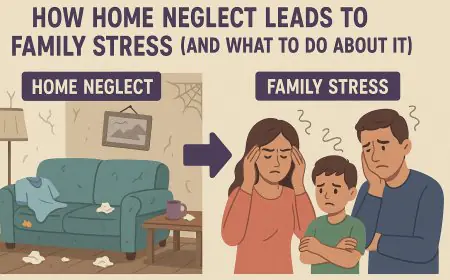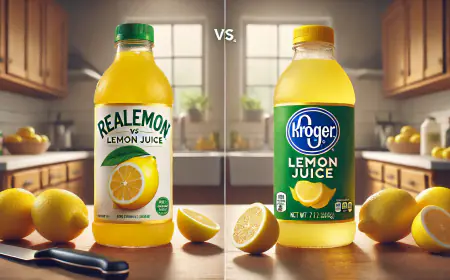Navigating the Smoke-Free Landscape: A Closer Look at Tobacco Flavor Bans
Explore tobacco flavor bans: their impact on public health, vaping trends, and the future of smoking regulations. Stay informed.

Key Takeaways:
-
Understanding the public health motivations behind tobacco flavor bans.
-
Exploring the potential societal impact of these regulations.
-
Examining global perspectives and examples on tobacco flavor regulations.
-
Discussing the role of technology and innovation in adapting to these changes.
The Rationale Behind Tobacco Flavor Bans
With the rising concerns about health implications and youth smoking, the enforcement of tobacco flavor bans has become a crucial step in curbing the broader public health crisis. Flavored tobacco products are often concocted with enticing tastes that mask the inherent harshness of tobacco. This characteristic not only attracts new users but also significantly increases its appeal to younger audiences, who are most vulnerable to developing long-term addiction.
Indeed, data unearthed by the CDC illustrates a disturbing trajectory in smoking trends, fueled predominantly by flavored tobacco products. The statistics reveal that a significant proportion of youth are introduced to smoking through these flavors, raising alarm among public health officials who view this trend as a ticking time bomb for future health burdens. The trajectories seen in youth usage patterns underscore the decisive role that flavor bans could play in changing the smoking landscape.
Impact on Communities and Health
The potential health benefits of implementing these bans are compelling and far-reaching. This movement is especially highlighted by the ban on flavored tobacco in California, a legislative effort targeting the flavors that increase smoking initiation and sustain addiction, particularly among youth. By removing flavored options from the marketplace, public health advocates anticipate that these measures will not only reduce the prevalence of smoking-related diseases but also ease the burden on healthcare systems. Such implications could resonate deeply, especially in marginalized communities with thin healthcare resources.
This move is expected to mitigate the public health challenges tied to tobacco use, given that smoking remains one of the primary preventable causes of disease worldwide.
Worldwide Adoption and Comparisons
Globally, the adoption of flavor bans has showcased a mixture of strategies converging towards a common goal: reducing tobacco consumption. According to findings by the World Health Organization, imposing restrictions on flavors could lead to a meaningful reduction in smoking rates, ultimately framing a healthier future for upcoming generations. In Europe, countries such as the UK and France have taken stringent measures against flavored tobacco, which have mainly been successful in lowering youth smoking rates. Other countries, like New Zealand, have embraced an even broader legislative package addressing all facets of smoking, including flavored products, aiming for extensive public health breakthroughs.
The varying successes and hurdles these regions face provide a valuable tapestry of experiences for policymakers worldwide. They offer insights into the cultural and economic adjustments necessary for implementing similar regulations while balancing public health benefits with financial implications.
Technological Advances and Market Shifts
Scientific and technological innovations continue to reshape consumer landscapes, offering promising alternatives to traditional flavored tobacco. The rise of e-cigarettes and vaping solutions introduces a double-edged debate, as these products are marketed with a slew of enticing flavors. While these options mirror the appeal of traditional flavored tobacco, they also present opportunities to redirect smoking habits towards less harmful alternatives. However, regulatory bodies are enacting specific restrictions on marketing tobacco products to children. The long-term effects of using these newer products are still being studied, making it essential to approach them cautiously.
As technology advances, innovation within the tobacco market is anticipated to play a pivotal role in supporting healthier lifestyle shifts. Through cutting-edge nicotine replacement options, smokers are provided with comprehensive resources to quit or transition away from combustible tobacco products, aligning with broader public health goals. These regulations potentially improve consumer welfare by preventing smokers from failing to optimize their choices. Specific acts also put particular restrictions on marketing tobacco products to children.
Consumer Behavior and Lifestyle Changes
In response to these unfolding regulations, many consumers are adjusting their tobacco consumption habits, signaling potential shifts in societal smoking norms. Reduced availability of flavored options is prompting users to explore nicotine replacement therapies or seek quitting programs, highlighting a trend towards more health-conscious lifestyles. Smoking rates have steadily declined as the health consequences of tobacco consumption have become more widely understood. Educational initiatives are crucial in providing insights about the health risks of continued tobacco use.
Educational initiatives are paramount in this transition, offering guidance and support for individuals seeking to quit smoking. These campaigns, which provide insights about the health risks of continued tobacco use, exert a strong influence in driving community-wide changes and fostering environments supportive of smoking cessation. These trends signify the importance of staying informed and adaptable in understanding vaping's role in society through a balanced and critical lens. There needs to be an emphasis on consumer behavior toward healthier options.
Legal Challenges and Industry Response
The tobacco industry's resistance to flavor bans is a predictable yet formidable barrier, featuring a blend of legal disputes and lobbying efforts. Despite the industry's attempts to overturn such regulations, governmental bodies worldwide remain unwavering in their health priorities, prioritizing public benefits over commercial interests. Enforcement of flavor bans requires coordinated efforts from local and federal authorities to ensure compliance and uphold public health objectives. Specific acts regulate smoking in public places and tobacco advertising.
Enforcement of these bans is vital, demanding coordinated efforts from local and federal authorities to ensure compliance and uphold public health objectives. This resilience underscores the commitment to mitigating tobacco's long-term health impacts, benefiting communities and individuals. Policymakers often argue that tobacco taxation poses a strong justification for heavily taxing cigarettes. These taxes limit negative externalities and lead to higher government revenues.
The Future of Tobacco Regulations
The future holds abundant possibilities for further advancements in tobacco legislation. An increasing array of expert opinions suggests that comprehensive tobacco control measures will become instrumental in dismantling smoking networks and fostering healthier societies. Monitoring and adaptive strategies will be essential as regulations adapt to ensure the sector's growth aligns with public health goals. Correctly accounting for lost consumer surplus depends on whether consumers are fully informed about the health risks of smoking.
The evolving regulations signal a paradigm shift, laying the groundwork for public health triumphs anchored on reducing smoking prevalence. As the landscape adapts to these changes, a broader understanding emerges of the potential for a smoke-free future underpinned by robust health systems and proactive legislation. Further research should assess how ithe mplementation of safety standards has influenced smoking-related fire incidence, deaths, and other costs associated with smoking-related fires. The key is emphasizing informed decision-making, advocating for transparent studies, and comprehensive education.
What's Your Reaction?























































































